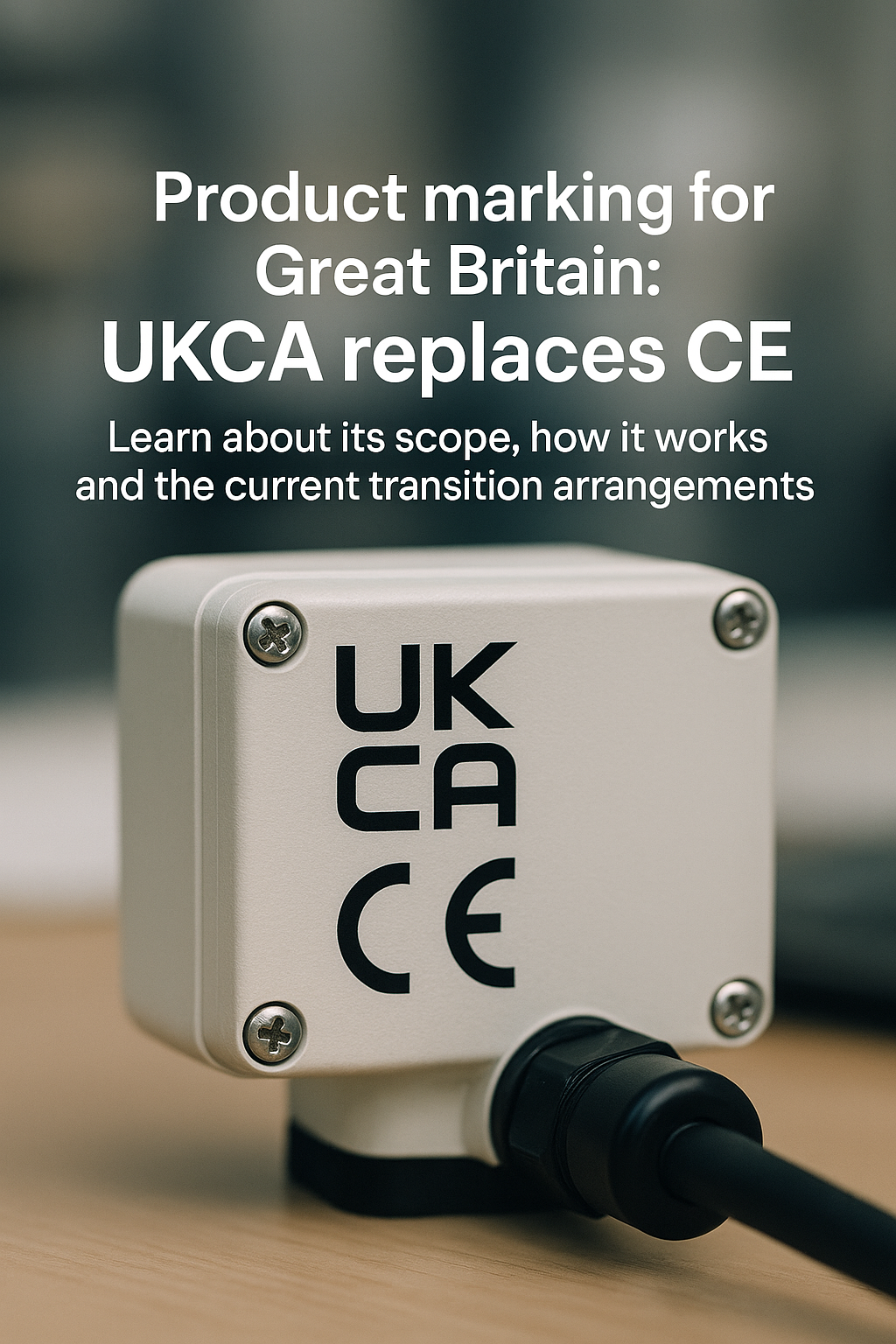Product marking for Great Britain: UKCA replaces CE. Learn about its scope, how it works and the current transition arrangements.
Background to the introduction
The UKCA marking was introduced as a consequence of Brexit to replace the CE marking that had previously applied in Great Britain. It was originally intended to become mandatory from 1 January 2021, but the transition periods have been extended several times to give businesses more time to adapt.
Scope of UKCA
The UKCA marking applies to the majority of products that previously required CE marking. These include, among others:
- Electromagnetic compatibility
- Measuring instruments
- Equipment for explosive atmospheres (UKEX)
- Radio equipment
- Pressure equipment
- Machinery
- Electrical low-voltage equipment
In addition, specific rules apply to categories such as:
- Medical devices
- Ship equipment
- Rail products
It should be noted that special arrangements apply for certain product categories and, in particular, for Northern Ireland.
UKCA and the CE marking
One of the most significant developments related to UKCA is the continued recognition of the CE marking in Great Britain. The UK government has enacted laws that indefinitely retain the current EU requirements, including the CE marking.
This means companies have the flexibility to use either the UKCA or the CE marking to sell products in Great Britain. This arrangement covers 21 product regulations, including 18 regulations managed by the Department for Business and Trade (DBT) and three further regulations covering ecodesign, civil explosives, and, in most cases, the restriction of hazardous substances in electrical and electronic equipment.
Transition arrangements
The UK government has introduced several transition measures to ease the move to UKCA marking:
- Indefinite recognition of the CE marking: businesses may continue to sell CE-marked products in Great Britain provided they comply with the relevant EU requirements.
- Fast-track provision: a new rule allows manufacturers to place products on the UK market if they meet the essential EU requirements and, where required, have been assessed by an EU-recognised conformity assessment body. To benefit from this provision, manufacturers must affix the UKCA marking and issue a UK declaration of conformity that lists compliance with the relevant EU legislation.
- Mixing conformity assessment procedures: for products covered by multiple regulations, a mixture of UKCA and CE conformity assessment procedures can be used.
How the UKCA marking works
UKCA conformity assessment procedures are similar to those used for the CE marking. Depending on the product and the associated risks, this may include:
- Self-assessment by the manufacturer
- Assessment by a notified body (in Great Britain referred to as “Approved Body”)
- Testing of product samples
- Quality assurance systems
The new fast-track provision also allows manufacturers to use EU conformity assessments for UKCA marking, simplifying the process for many companies.
Context and assessment
The introduction and evolution of the UKCA marking reflect the complex challenges Brexit has posed for trade and product regulation.
The UK government has taken an increasingly pragmatic approach by extending transition deadlines and ultimately introducing indefinite recognition of the CE marking. This demonstrates an awareness of the practical difficulties faced by businesses.
The option to use either UKCA or CE markings gives companies flexibility. However, this could lead to regulatory divergence between Great Britain and the EU over time, creating new challenges.
The introduction of UKCA has undoubtedly generated additional costs and administrative burdens for companies. Recent adjustments aim to minimise these without relinquishing the UK’s sovereignty over product regulation.
The continued recognition of the CE marking can be seen as a positive signal for maintaining close trading ties with the EU, while the UKCA marking allows Great Britain to take its own regulatory path where necessary.
Conclusion
The UKCA marking represents a significant shift in Great Britain’s product regulation. It symbolises the changed trade relationship between Great Britain and the EU and highlights the regulatory challenges arising from Brexit.
Recent developments, notably the indefinite recognition of the CE marking alongside UKCA, point to a balancing act: on one hand, the UK seeks to retain regulatory autonomy, and on the other, to avoid unnecessary trade barriers.
For businesses this means more flexibility but also a need to closely monitor developments in this area. The ability to use both markings facilitates market access in both Great Britain and the EU.
In the long term it remains to be seen if and how UK requirements will diverge from those of the EU. UKCA gives Great Britain the option to pursue its own regulatory approaches when needed, while the continued recognition of the CE marking for now maintains a close alignment with EU requirements.
It will be important for companies, consumers and regulators to follow the further development of UKCA and its relationship to the CE marking closely, as it will have a significant impact on trade between Great Britain and the EU.

